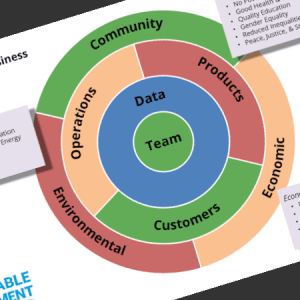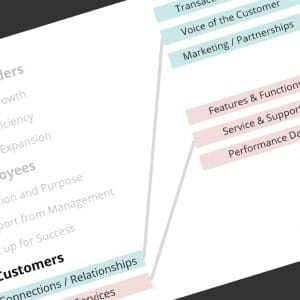A simple but comprehensive method for defining your budget - gives a complete picture of all the costs, reduces risk by minimizing the unknown, and makes it easier to compare alternatives.
When pitching a new digital project to your management, you want a clear line of sight to all of that value you’re going to create – hard $$ (new revenue, margin expansion, increased share), soft $$ (customer lock-in, better competitive position), and/or productivity. But too many teams fail to lay out the cost side of the equation very well. This typically leads to some common behavior patterns:
The Zero Investment Tactic: These ideas are too new, they’ll never approve this – so I’m doing it as a side project, on my own time … it’s all based on open source … all I need is a college intern looking for a semester project … my nephew knows something about computers and he built a web page once … I think conversations that start like this are amusing in the face of the grand amounts of value that folks are confident will be generated. If we plan on making two million dollars in year one – why not spend $500K to get it built, quickly and with some hope of scalability?
The One Number I Know: If software is required (custom or packaged), or if SaaS / on-line is the answer, folks will get a price quote from the vendor or an estimate from the developer and get budget approval for that number. That’s it – no money or time planned for hardware, hosting, implementation services, integration to other systems. And most digital solutions will need ongoing care and feeding, training and tuning, and multiple supporting processes – is the existing team going to give up some of their current work, or are we adding incremental headcount?
The Integration and Data Quality Assumptions: It’s extremely rare that we’re applying our digital thinking at a problem that is new and “unattached”. Typically, I’m looking to perform some sort of transaction automation, provide access to information for my customers, or looking for trends and opportunities with some witty analytics … the information is right there in my [ERP, Web Site, Product Catalog, CRM system, click streams, HR / Payroll database, CAD drawings, etc.] … if I can just present it better, or make it available on my mobile phone … Truth is, the big chunk of work will come in the areas of data quality (… this new and unanticipated use of our data has different quality requirements …) and/or integration (how am I going to get data into and out of system X?) – and few systems or services come fully integrated with every data source in my unique world …
There are many ways to address these patterns, but I am not throwing a massive wet blanket on things here. Diving immediately into the cost and planning details will be counterproductive, and will slow the inertia – especially here at the beginning of the project, when we are trying to seize an opportunity and generate excitement and support. Right now, we just need a simple Cost structure to accompany our simple Benefits definition (previously); I understand how much it’s worth, but how much is it going to cost me?
The cost elements of any digital project are going to lay out like this Digital Project Budget:
There are a couple of major benefits here:
- Simple + Complete Cost Picture: For the executive approver, nothing says “I know what I’m talking about, I’ve thought this through” like a comprehensive cost structure that is quick and easy to understand.
- Risk Reduction: Getting all of the elements in here will force you to think of the big picture – not just the sale price from the vendor rep trying to make their quarter. Reducing risk of the unknown – another plus for our executive sponsor.
- Comparing Alternatives: It should be just as simple to build a complete cost model for competing alternatives; a great way to show that this option has the best cost profile (once you’ve established that “doing nothing” is not viable …)
This structure also addresses two of the bad behavior patterns above:
- The One Number I Know: If you fill in the grid completely, you’ll have a lot more than just “acquisition cost”. Of particular value is the People / Talent section – you could replace the $$ with “work hours” or FTEs, but you have to call out that this new stuff will require incremental work.
- The Integration and Data Quality Assumptions: The Professional Services section should have some decent amount of budget in there (unless you happen to have folks on staff with human-centered design, big data, and integration development skills)
Will this help you tee up your next digital project? I welcome suggestions for improvements, clarifications, etc. Also – to request edit access or to get a copy, send email to jpmacl@cazh1.com
10 November, 2014






Comments (0)